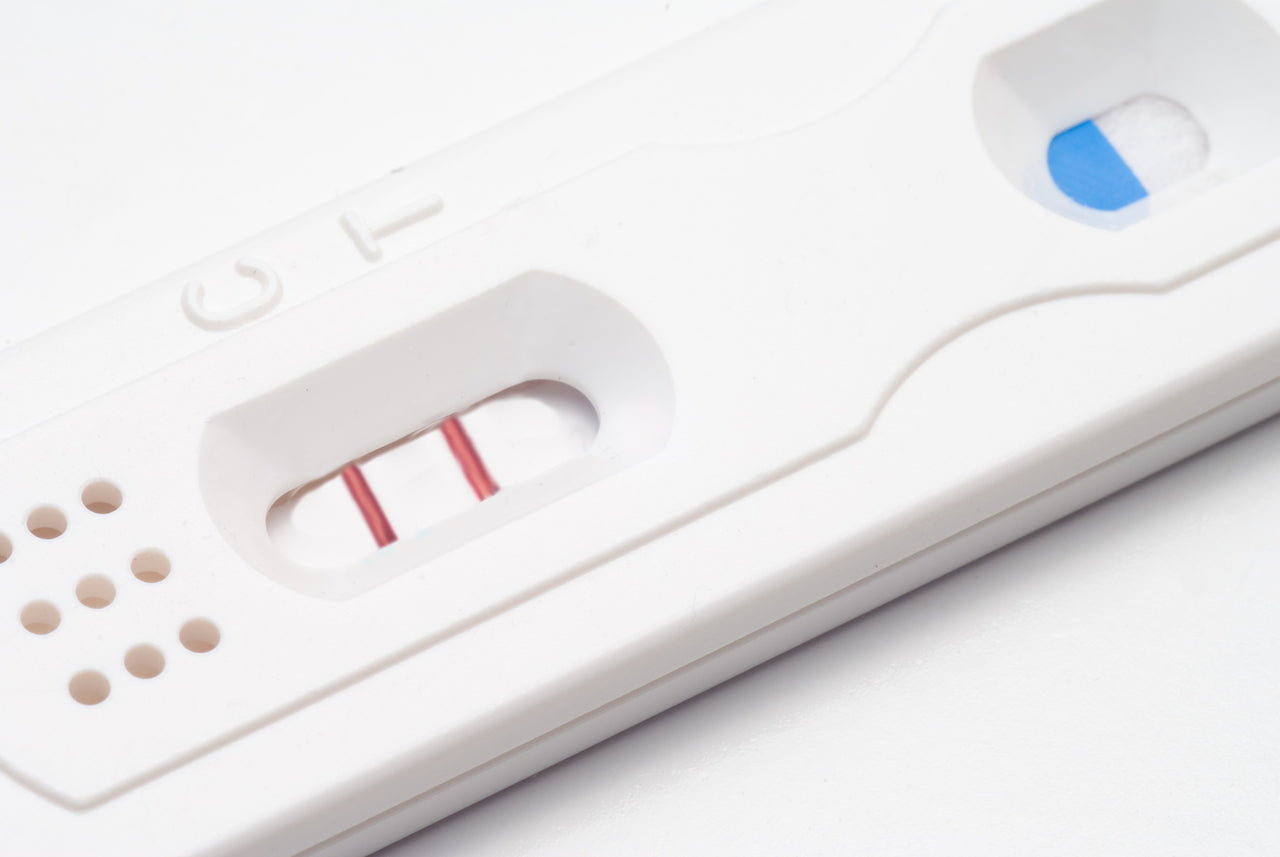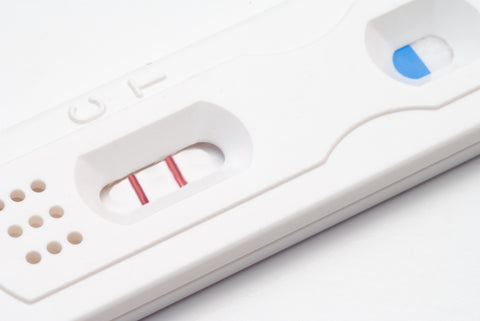
Can I Have A Positive Ovulation Test But Not Ovulate?
What is an LH Surge?
Ovulation is the process of an ovary releasing an egg from the follicle and allowing the egg to float down the fallopian tubes. Just before ovulation, a dramatic hormonal change takes place called the LH Surge.
Luteinizing hormone (LH) is the hormone that initiates ovulation by causing the egg to separate from the ovarian surface. Ovulation predictor tests detect the surge and let you know ovulation is near.
How Do You Tell if an OPK is Positive?
Reading an ovulation test can be a bit tricky. If you want to remove the guesswork, digital ovulation predictor kits are your best bet. They are more expensive, but you will have a definitive yes or no answer.
The less expensive ovulation tests rely on you comparing the color of the test line and the control line. Ovulation test differs from pregnancy tests. The color of the test line has to be the same color or darker than the control line for a positive result. For pregnancy tests, if there is a second line, no matter how dark, it is a positive result.
What Does A Positive Ovulation Test Mean?
A positive ovulation test means that your body has a higher level of LH than usual. Before ovulation, your hormones change, and there is a surge of luteinizing hormone. The surge triggers the ovary to release an egg aka ovulating. Once you get your first positive test result, you will ovulate in 24 to 36 hours. Having sex now should be at the top of your to-do list if you want to get pregnant.
Ovulation Prediction Kits (OPKs) and False Positives
Ovulation prediction kits are available at drugstores and grocery stores without a prescription. They are easier to use and often more accurate than the basal body temperature method. Ovulation tests predict ovulation 24 to 36 hours in advance. This forewarning helps you increase your chance of getting pregnant the very first month you use them.
Ovulation prediction kits are not foolproof. They can give you false positive results. A false positive means you may not ovulate, even though the ovulation prediction kit tells you that ovulation is around the corner.
A false positive ovulation test result is one where you get a positive result when you are not about to ovulate. Multiple positive ovulation tests in a row are not considered a false positive result. It indicates that your LH surge is strong and lasts longer than average. You should ovulate within 24 to 36 hours of the first positive result that you received.
What Causes False Positive Ovulation Test Results?
PCOS - Some women with PCOS can have elevated LH levels. The elevate LH can make using ovulation tests unreliable. If you have PCOS and regular periods, ovulation test should work as expected.
Recent Pregnancy - Due to the similar protein components of LH and hCG, ovulation tests might pick up the hCG in your urine and give you a positive result. Pregnancy tests are more selective and only register hCG for testing purposes. If you end up with a week's worth of positive ovulation tests, you might want to pick up a pregnancy test to see if you are pregnant.
Prescription Drugs - Some medications can cause you to get a false positive on your opk. The American Pregnancy Association lists these medications as potential culprits.
- Pergonal
- Danazol
- hCG injections, such as Profasi or APL
- Clomid
- Serophene
Talk to your doctor if you are taking any of these medications and want to get pregnant. They can guide you about when to use ovulation kits and get accurate results.
How to Use Ovulation Test Strips
1. For maximum accuracy, follow the ovulation prediction kit's directions to the letter. However, if the instructions say to test the first urine of the day, you may want to test your second morning urine instead. Your urine can become concentrated overnight and might give you a false-positive result.
2. Your cycle starts on the first day you have your period. If you have a 28-day cycle, start the ovulation prediction test on day 11 and use it for six days. Check with the instructions to see what the manufacturer recommends.
3. If your cycle is longer, say 35 days, start on day 14, and test for nine days.
4. If you have an irregular cycle, ovulation tests will likely cause you much frustration. You’ll have to buy many kits to use over a longer time to catch a surge at some point.
5. If your cycle runs between 28 and 40 days, your ovulation may range between days 14 and 26. Because the kits usually provide only five to nine days' worth of tests, you’ll need to buy at least two kits a month.
6. Be sure to read the results of the test within the time frame stated in the instructions. If the test line is lighter than the control line, test again the next day at the same time. We recommend that you test twice a day with about 10 hours between the testing. If you test at 10 am you can test again at 8 pm. Testing twice will ensure that you don't miss your surge if you have a shorter than average LH surge.
If the test line is as dark as or darker, congratulations! You have a positive opk, which means you will be ovulating within the next 24 - 36 hours. Having sex now and in the next two or three days will ensure that sperm will be waiting for your egg at ovulation.
Tags:
Ovulation
Quick links
Search
Contact Us
Shipping Information
Helpful Info
Terms of Service
Privacy Policy
Do not sell my personal information
Contact us
About us
BabyHopes.com is a family owned and operated business, opened in January 2001. We have been serving the trying to conceive community for over 20 years.

